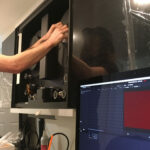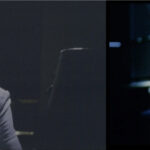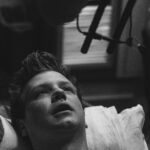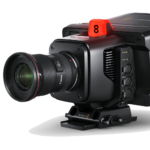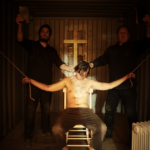Visual effects (VFX) house Trick Digital used Fusion Studio VFX and motion graphics software for the new action film “57 Seconds.” In addition to handling the film’s VFX, Fusion Studio was used to create an exciting opening sequence for the time traveling thriller.
Starring Morgan Freeman and Josh Hutcherson, “57 Seconds” follows a tech blogger who thwarts an attack on a tech guru he’s interviewing, only to discover a mysterious ring that allows him to travel 57 seconds into the past.
Trick Digital completed more than 200 VFX shots for the film and was also tasked with creating its opening credits, using Fusion Studio’s 3D system to create stylized news and blog screens related to the main characters. VFX Supervisor Adam Clark explained, “We were asked at the last minute if we could do something really cool and special with the main title and opening sequence. We needed it to support some backstory and also add something flashy to the intro of the film. We got our start in film by designing animated main title sequences, so we loved this additional request.
“It was a very creative and playful process. Fusion’s 3D system and node based architecture allowed us to rapidly conceptualize, creatively iterate, and execute the idea 100 percent in context of the final rendered image instead of going into a dedicated 3D app, which is how we prefer to work if we can.”
One of the film’s particularly challenging VFX sequences featured Morgan Freeman’s character, Anton Burrell, speaking in a stadium. “The stadium’s seating presented a unique challenge, with limited crowd shots and occasional instances of group shots without greenscreen setups,” Clark explained. “Fusion’s node based workflow and paint, image warping and roto tools really made this possible with relative ease. We created a crowd kit out of the people filmed with tons of roto and repainting, and rearranged people, tweaked them and ultimately created sections of the crowd using perspective and warping to set them properly in the environment.”
“For us, working with Fusion now for over 20 years and being fluent in it gives us creative freedom where we can work very quickly,” he added. “The node based workflow, aside from being ideal in production for a great number of reasons, lets us try things out without having to jump through a laborious array of timeline based flaming hoops to accomplish a novel task.”
Having come from a software development background, Clark noted that Fusion Studio’s scripting capabilities are a big asset. “It feels very natural. I can easily write expressions to add parallax to simple point trackers to create artificial depth or use expressions to just make lights flicker. It’s great to be able to create with that level of creative and technical control. Ultimately, it’s just about creating great images as quickly as possible, and the more flexibility you have in the toolset, the better,” he said.
Whether doing building modifications or digital prop creation and enhancements for “57 Seconds,” Trick Digital relied on Fusion Studio’s 3D system as the backbone for its VFX work. “We’re big fans of the new planar tracker and 3D camera tracking tools,” explained Clark. “We use them all day long, every single day for all the things you might expect, as well as others such as tracking mattes in 3D space to avoid or minimize roto, while still being able to change the points of the original shape, which is very powerful.
“I will create vast networks to generate mattes to minimize roto work, but it is unavoidable. I’m at peace with that only because Fusion’s fantastic roto and paint tools make a process that’s normally the bane of my existence one that I can zen out to.”


